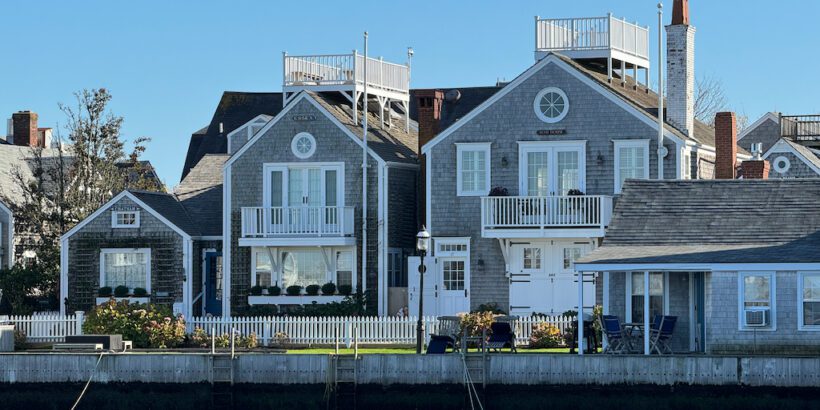During the heyday of whaling in Nantucket in the 18th and 19th centuries, the wives of intrepid sailors would often find themselves gazing out to sea, their hearts filled with anticipation and anxiety as they waited for their sea-faring husbands to make their triumphant return. These women would pace up and down what we’ve come to know as “widow’s walks,” perched atop their homes.
But hold on to your harpoons, because the truth behind these iconic structures might just surprise you.
While the myth paints a romantic picture of these widows walks, which are also referred to as “roof decks” by the locals, reality tells a different tale.
In this piece, we’re plunging headlong into the rich history of widow’s walks and giving you the lowdown on how to find yourself upon one in Nantucket, Massachusetts.
Table of Contents
What is a widow’s walk?
A widow’s walk, also known as a “roof walk,” is a small elevated and railed platform/walkway typically located on the rooftop of a house or building, often featuring panoramic views. It has a unique historical significance and was common in coastal regions of the United States, such as New England, beginning in the late 18th century.
The exact purpose of these is debated but we will dive into the details below!
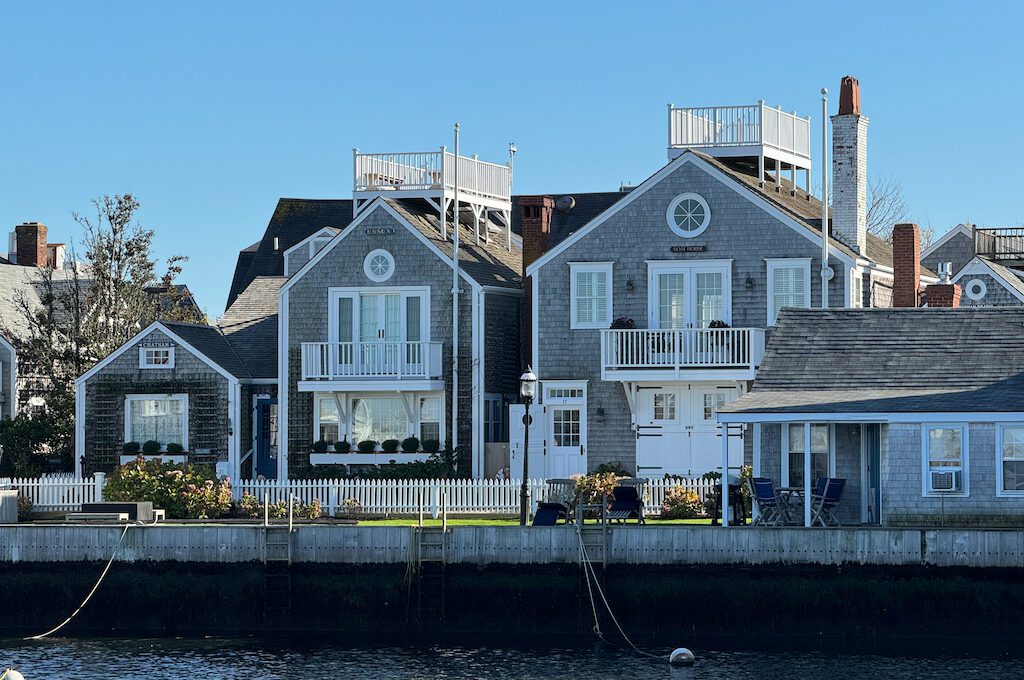
Where can you find widow’s walks?
Widow’s walks grace the rooftops of numerous coastal regions, adding an air of old-world charm to seaside towns across the United States.
Nantucket, Massachusetts, is definitely the “widows walk capital” but while Nantucket prominently showcases these iconic structures, they’re not the sole bearers of this architectural feature.
In the U.S., New England coastal towns also have their fair share of widow’s walks and we encountered several of these in places like Salem, Wareham, and Plymouth, Massachusetts. They can also be found throughout Cape Cod including places like Provincetown, Chatham, and Hyannis.
Here are some images of widow’s walks from around coastal areas in Massachusetts:
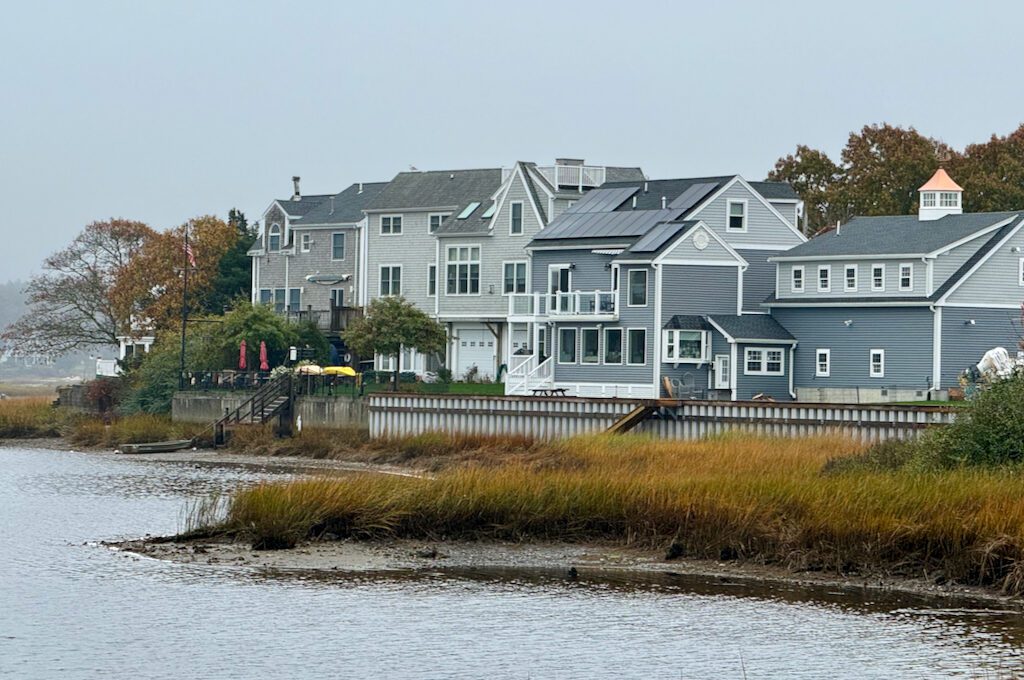
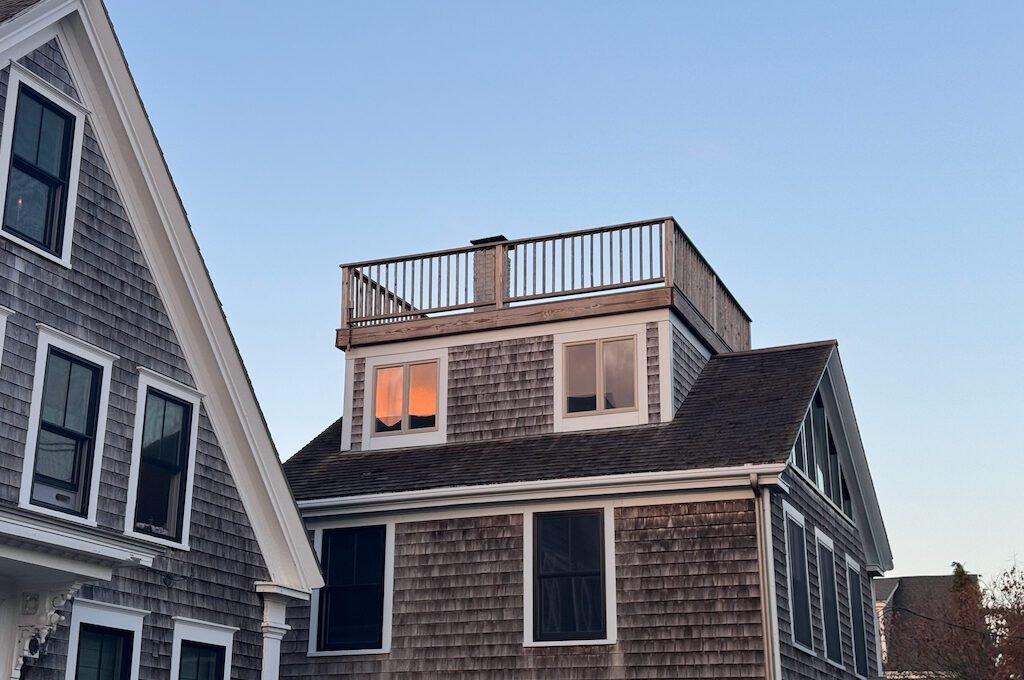
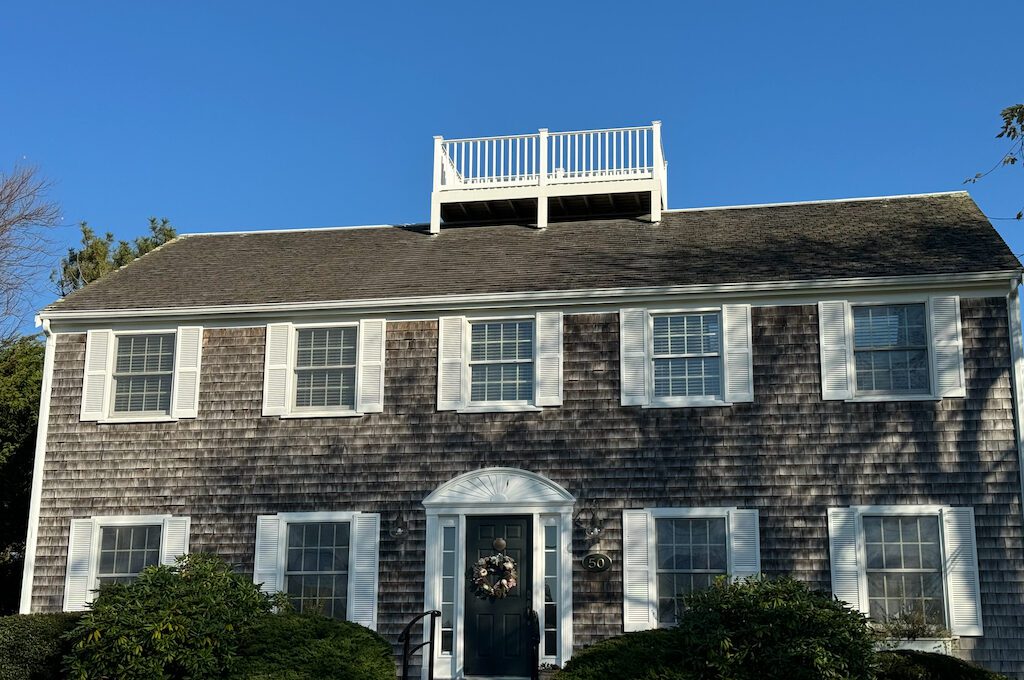
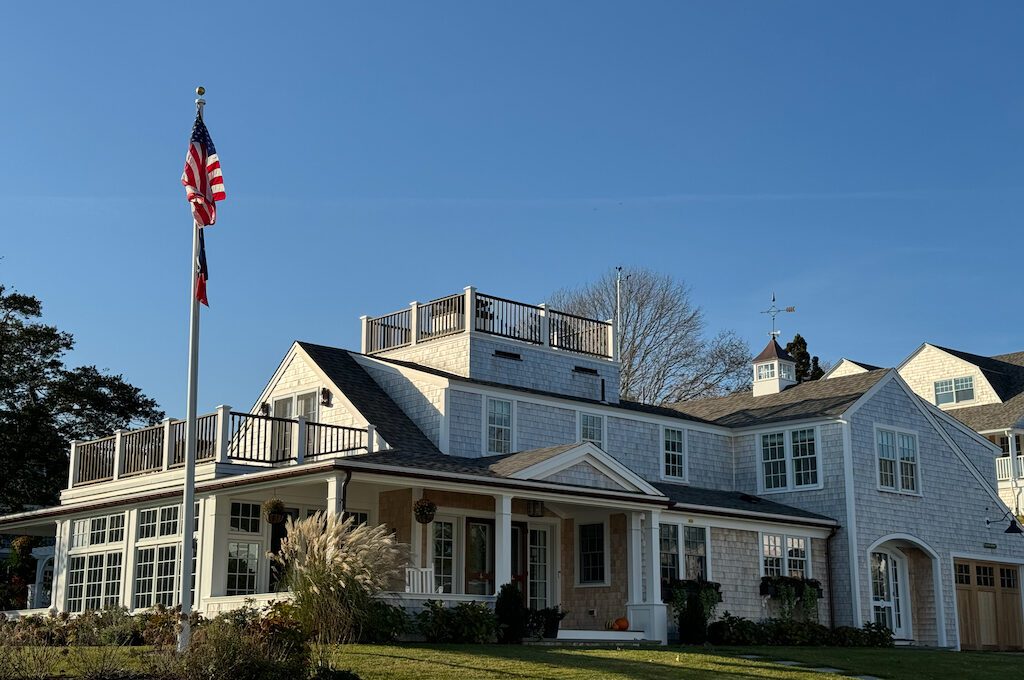
And even outside of New England, you can find them in some coastal areas.
History of the widow’s walks
The widow’s walk phenomenon took root in the late 1700s and early 1800s, as sea captains, riding high on the fortunes reaped from whaling and shipping, constructed grand, private residences.
Its said that the widow’s walks were influenced by the cupolas of Italianate architecture, which were small, dome-like structures often perched on rooftops that provided ventilation, natural light, and sometimes served as observation points.
I guess designers realized that having a platform or observation deck would be a stylish addition, and this may have played a role in the inception of the widow’s walk. However, the timelines don’t really add up for me, as Italianate architecture was rising in the 1840s but I believe widow’s walks were up at the time of the Revolutionary War?
Nevertheless, the widow’s walk introduced a fresh and distinctive element to the coastal landscape and the addition eventually became an emblem of New England coastal architecture, a status it proudly maintains to this day.
The standard widow’s walk design typically features crisp white railings, creating a striking contrast against the dark roofs and making them easily noticeable from quite a distance. However, there’s room for creativity in this realm.
Some widow’s walks showcase ornate railings, and you’ll sometimes spot variations in colors. Some opt for hues that blend seamlessly with the shingle color, while others go for shades that complement the overall exterior color scheme of the house.
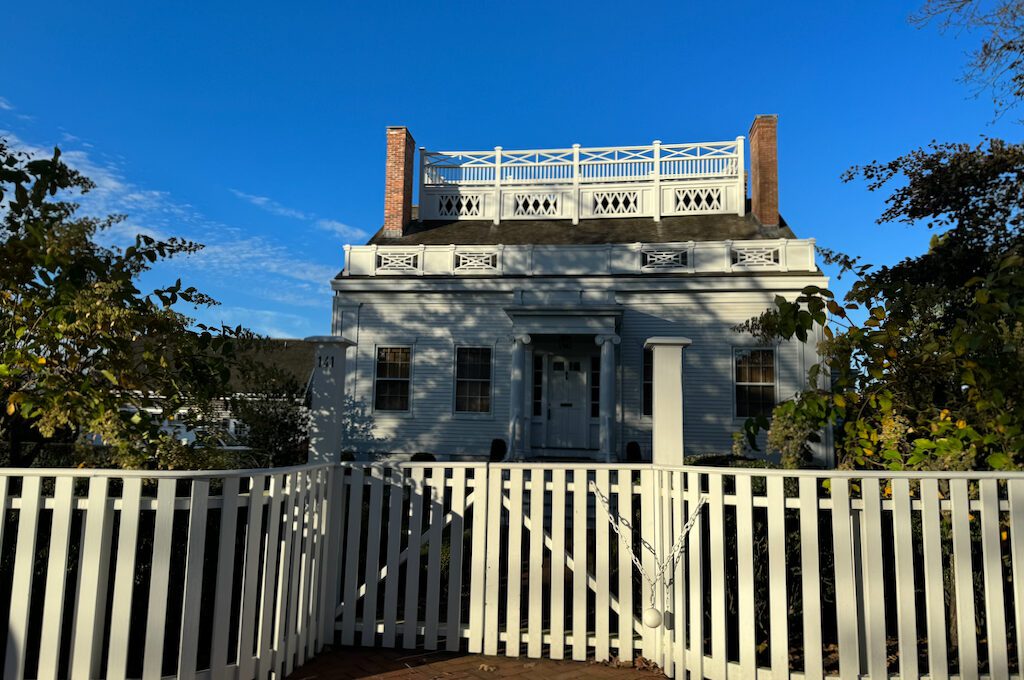
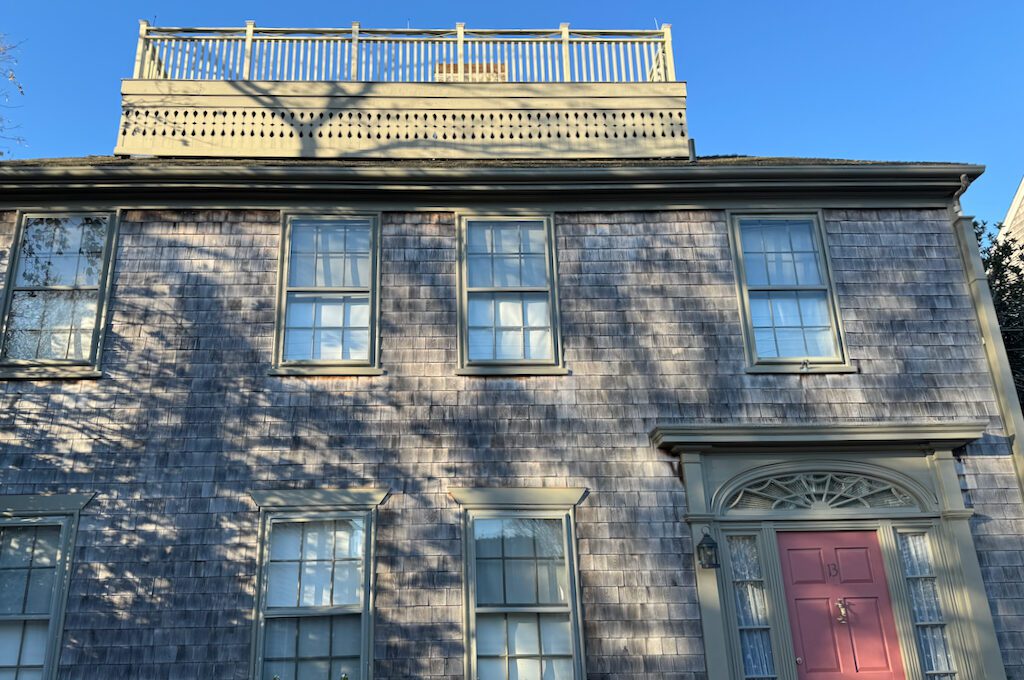
What was the real purpose of the widow’s walks?
The role of these widow’s walks has been a topic of spirited debate, and it’s clear that they could have served a variety of purposes.
One of the most enduring myths is the romantic notion of a mariner’s spouse, anxiously pacing back and forth while awaiting her husband’s return, only to be met with despair as he’s claimed by the relentless sea.
However, sea voyages often stretched for several months, and sometimes even years. The idea that a spouse would be perched up there, gazing out for months or years just doesn’t add up.
Perhaps it’s more plausible that these platforms were used in the days or weeks leading up to the anticipated return of the ship, as such homecomings were big deals at the time.
But dedicating an entire rooftop structure for that purpose, which may have only been needed a few weeks over the span of many years, still doesn’t quite sound that compelling.
Indeed, native Nantucketers seem to have an aversion to the term and prefer simply calling them “roof walks,” which I believe is it further sign of this myth.
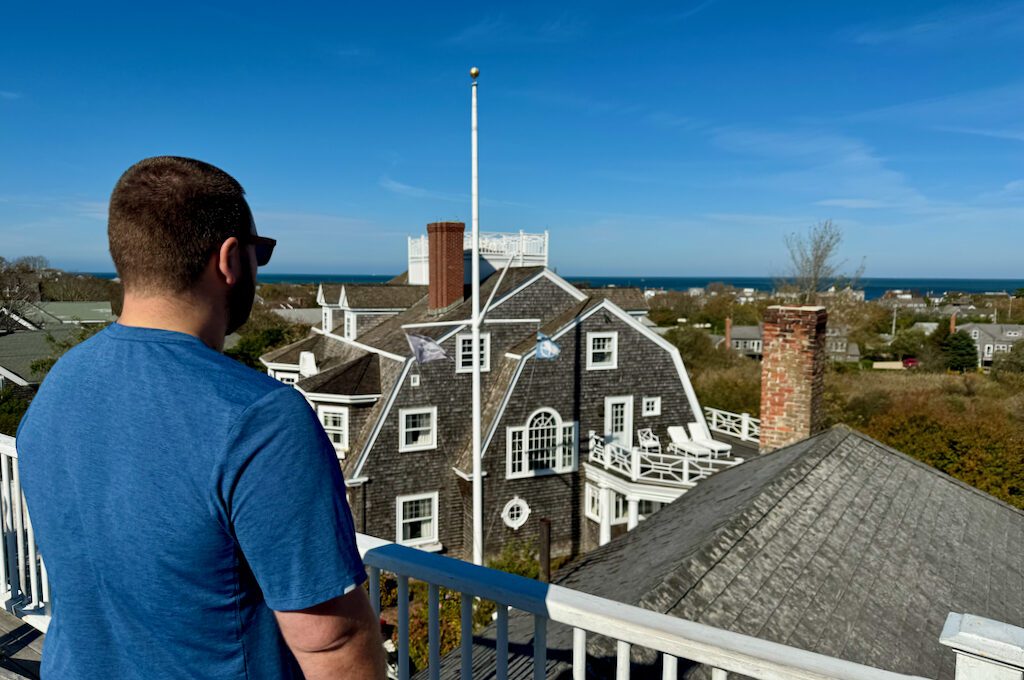
If you examine many of these widow’s walks closely, you’ll notice a common feature: they are often strategically positioned near chimneys. This is where their practicality comes in.
In the 1800s, when wood was the primary source of heating in homes, chimney fires were all too common and posed a serious threat.
And with this in mind, the practical purpose behind these elevated platforms becomes evident – they provided a swift means for someone to ascend to the rooftop and extinguish a chimney fire by pouring sand or water down the chimney, potentially saving the house from disaster. It’s said buckets of water or sand were kept up on the platforms.
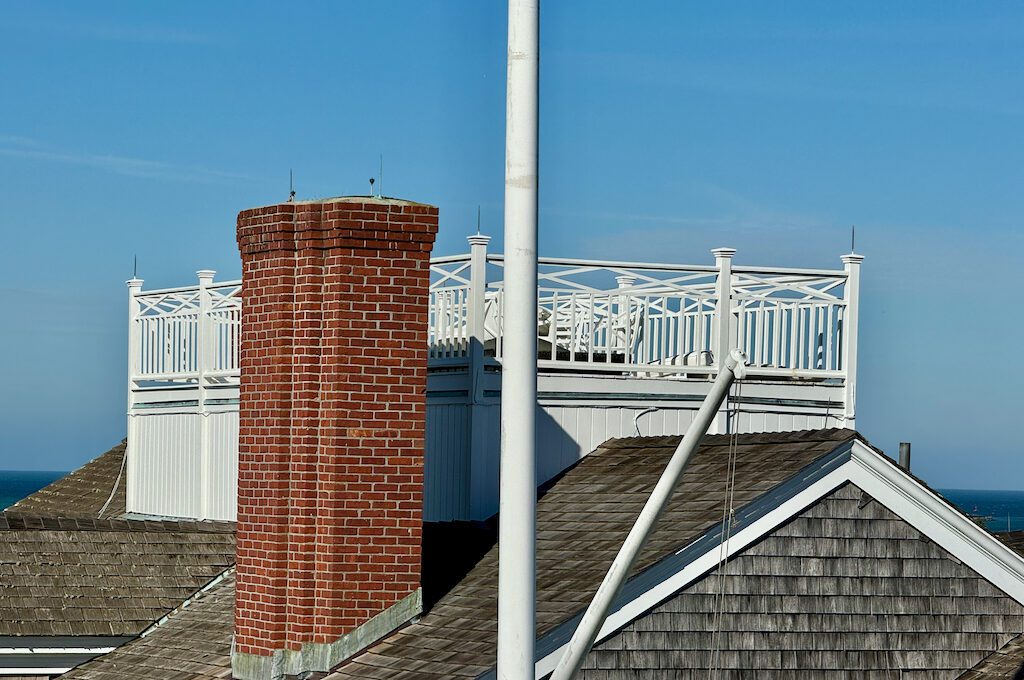
It’s also entirely conceivable that these widow’s walks served as more than just practical safety measures; they could have doubled as status symbols. These platforms often lend homes a commanding and imposing presence, fitting for the captains who commanded the open seas.
For successful captains, these lofty perches offered a place to savor the breathtaking ocean views that had brought them wealth and prestige. It was a front-row seat to the very source of their financial fortune and elevated social standing.
Even the widow’s walk itself seems to draw inspiration from nautical design elements. This rooftop feature mirrors the design of a crow’s nest, a term familiar to sailors as a platform typically perched at or near the pinnacle of a ship’s mast, often doubling as a lookout station.
There’s also the possibility that some mariners wanted to keep a watchful eye on the comings and goings of ships in and out of the bustling port. These would have been similar to “Captain’s walks,” which were “basically a balustrade platform supported on posts resting on the sides of a gabled roof and were built specifically to obtain a view of incoming and outgoing vessels.”
So these widow’s walks could have been a statement of achievement, a blend of form and function that exuded both power and reverence.
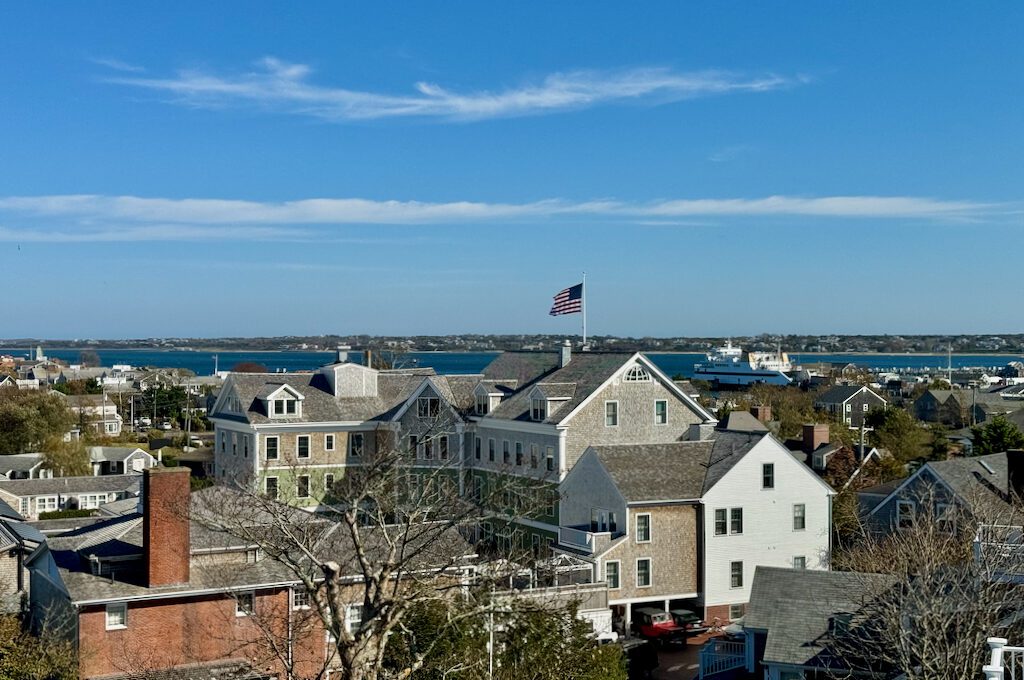
And let’s not forget the simple pleasure of taking in the view and unwinding.
For some, these widow’s walks might have been a serene escape, a peaceful perch to savor the scenic beauty. Along with these views, the wives may have also relished the freedom from their spouse as the lyrics to a famous 1855 tune called “The Nantucket Girl’s Song” read:
“Then I’ll haste to wed a sailor, and send him off to sea, For a life of independence is the pleasant life for me… But when he says Goodbye my love, I’m off across the sea, First I’ll cry for his departure, then laugh because I’m free…“
You can imagine wives relaxing on warm summer days, with the ocean breeze wafting gently across the widow’s walk, providing a cool and refreshing respite from the heat. It’d be the perfect spot to kick back, relax, and soak in the tranquility of coastal living, which is indeed what some continue to do on these platforms today.
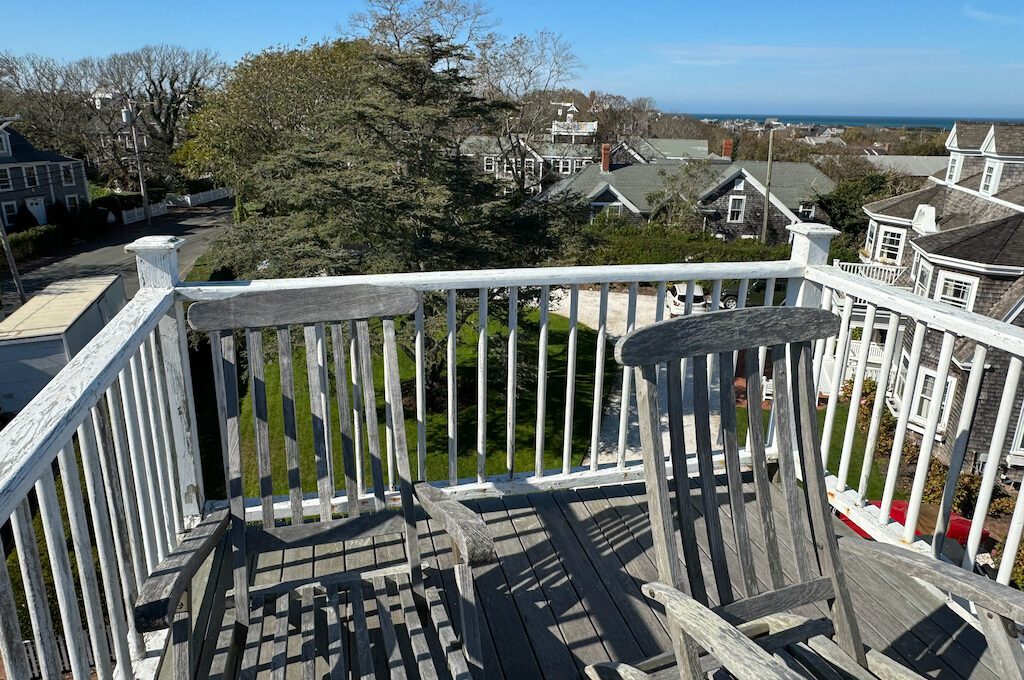
Lastly, one of the most interesting potential uses that they could’ve been used as observation decks for astronomy and perhaps help sailors calibrate their marine chronometers, tools used on a ship to find the ship’s position by celestial navigation.
Based on my own research and conversations with Nantucket museum staff members, I believe that the main purpose was to allow home owners to put out chimney fires and that lots of people also just enjoyed having a view of the town and the sea. But it’s likely that the widow’s walk served several different purposes which could’ve been different depending on the person.
How to get up on a widow’s walks in Nantucket
Observing the widow’s walks from down on the streets certainly provides a taste of their allure, but the true magic lies in experiencing one firsthand.
If you ever find yourself on a visit to Nantucket, seize the opportunity to ascend a widow’s walk yourself.
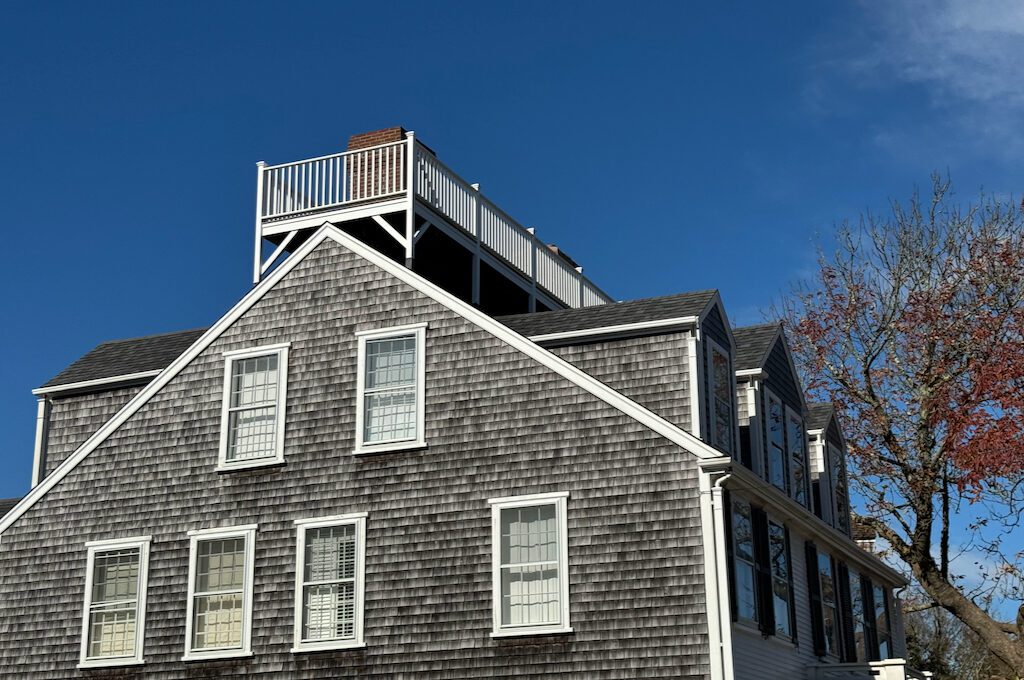
My personal tip? Hunt down a cozy bed-and-breakfast that boasts its very own widow’s walk perched on top. Take, for instance, our stay at the Cliff Lodge, a charming historic house that dates back to 1771, built by a sea captain. It features a classic widow’s walk, and all of the guests can access it for an unforgettable experience.
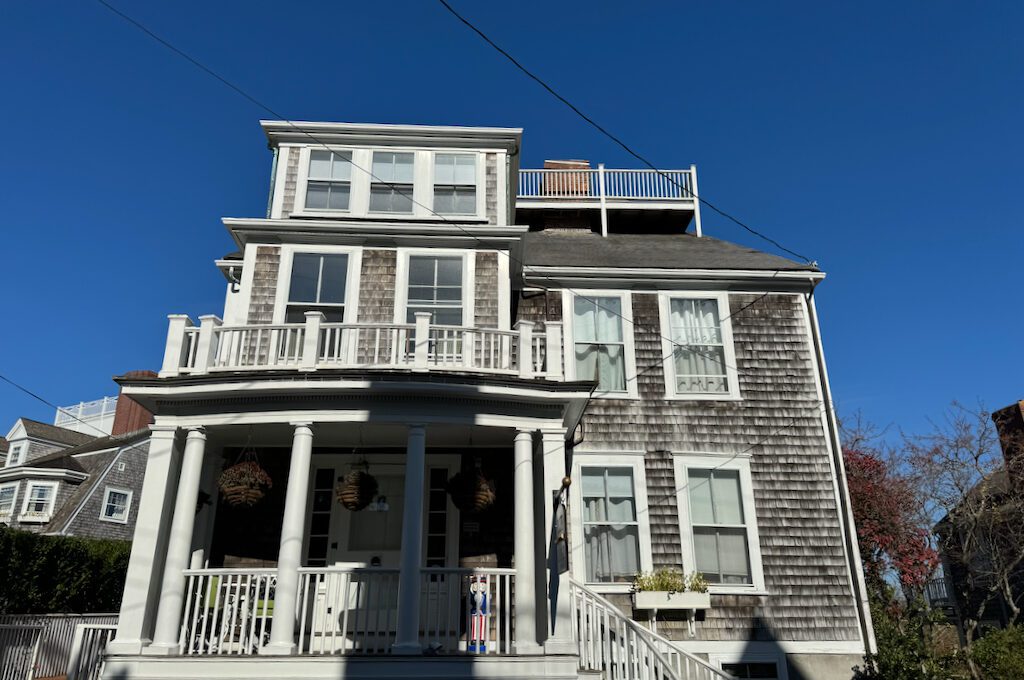
It’s not always so easy to get up in these widow’s walks though.
Some of them offer straightforward entry points, particularly those (likely newer constructions) featuring exterior balconies and staircases like this one seen in Plymouth, MA.
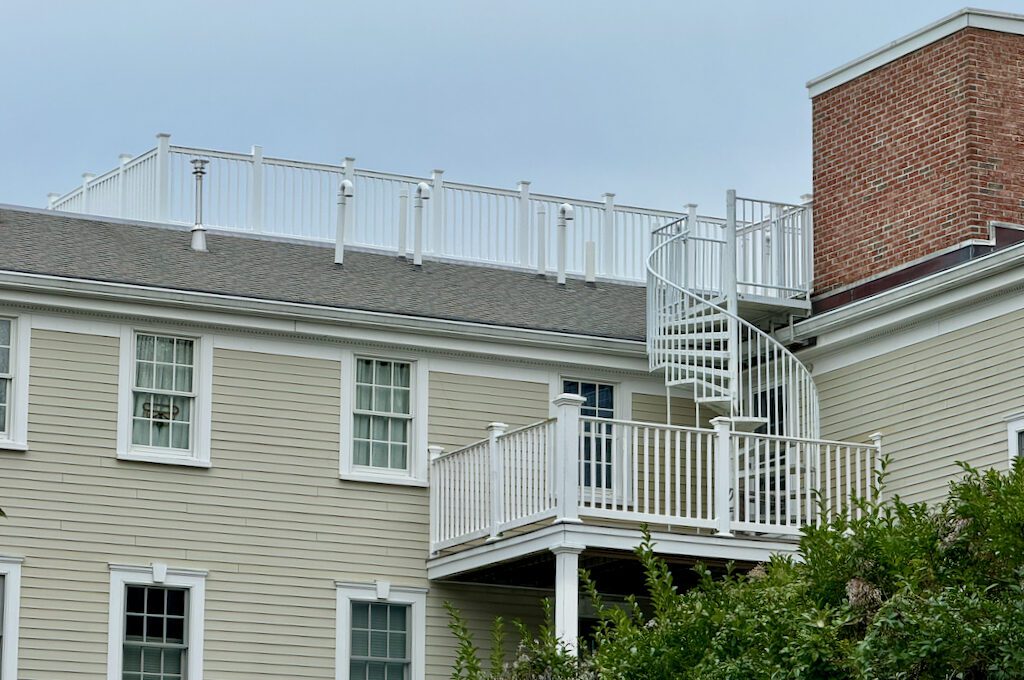
However, for most, the traditional method involves ascending a ladder through an attic and then making your way out to the roof through a trap door.
For those with a fear of heights, an ascent to a widow’s walk might not be the best idea.
Just the day before we embarked on our widow’s walk adventure, someone at our B&B had a full-blown meltdown up there. And honestly, I can’t say I totally blame them.
First of all, when you’re on top of some of these homes, you are much higher than you initially anticipate. Standing on top of a 3 1/2 story house — possibly situated on top of a hillside — you’re a good ways up!
Some of these widow’s walks sport railings that might seem a tad lower than you’d prefer. You don’t quite feel as protected up there as you’d like. Throw in some strong, gusty winds, and the whole experience can get a bit spicier than you might initially think — it’s not always your typical balcony viewing experience.
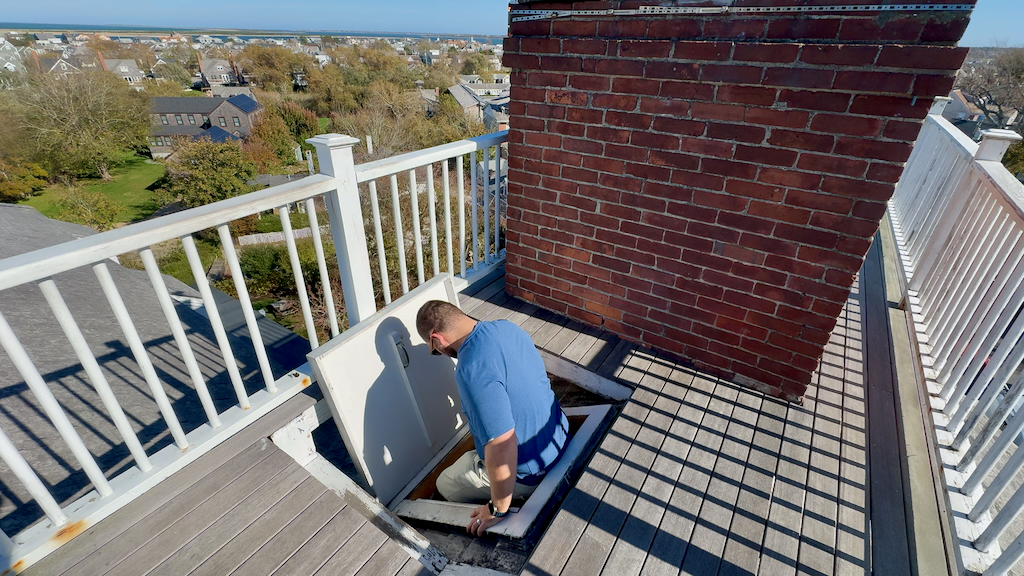
For all these reasons, you might find yourself facing a few bureaucratic hurdles.
Prepare to sign a release form before ascending to these heights. Getting access might also entail getting the owner to unlock the doors and latches and thus timing your visit accordingly. And once you’re up there, be ready to follow some specific rules which might limit the number of people or even restrict you from some portions of the walk that might be off-limits.
Additionally, be aware that some property owners have chosen to keep their widow’s walks off-limits to avoid any potential mishaps. So make sure that you call ahead and confirm that you can access before making a booking.
Despite the challenges, I can assure you that the effort is entirely worth it for those breathtaking views and the chance to immerse yourself in the widow’s walk experience.
If securing a spot in a charming B&B proves elusive, fret not – the Whaling Museum is a worthy alternative. While it may technically resemble a widow’s walk, it leans more towards an observation deck.
Nevertheless, it’s a fantastic substitute, offering splendid views and a sense of being on top of the world when access to a true widow’s walk remains out of reach.
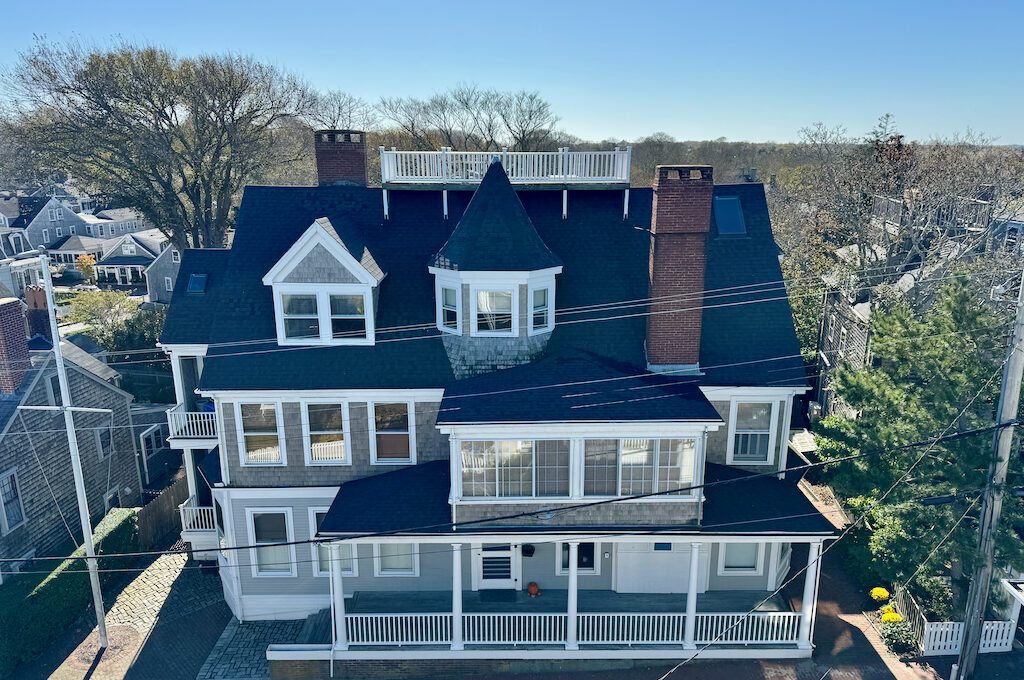
Final word
Widow’s walks are a distinct architectural marvel that graces New England’s coastal towns, with Nantucket being a prime hotspot.
There’s an undeniably charming and alluring quality to these rooftop perches, and the experience of spending time on one is truly unique. If you’re lucky enough to land a stay at the right bed-and-breakfast, you can claim your spot on one of these historical gems.
While the tales of sea-loving spouses awaiting their partner’s return may be more folklore than fact, it’s still enjoyable to be a part of this romanticized history.
Daniel Gillaspia is the Founder of UponArriving.com and the credit card app, WalletFlo. He is a former attorney turned travel expert covering destinations along with TSA, airline, and hotel policies. Since 2014, his content has been featured in publications such as National Geographic, Smithsonian Magazine, and CNBC. Read my bio.

